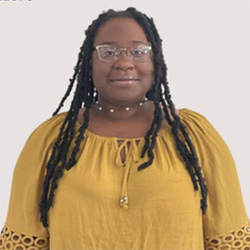Alexandria D.
Summary of My Experience

Morning Walk/Tour of So8ths
On June 19, we visited the Southern 8ths property and walked along the creek to get a general overview of the site. It was mostly observational, but it helped set the scene for the next day’s hands-on work. Then, on June 20, we returned and worked with Justin from Adopt-a-Stream to collect and identify macroinvertebrates. It reminded me of what Ruth showed us during our very first field day. We found hellgrammites and leeches, and it was fascinating to see those invertebrates up close as they are indicators of water quality.
Day Field Sample Collections With SC DEC
During this part of the trip, we worked with Justin, Tori, and Scott from SC DEC (formerly SCDHEC) to collect water samples using a variety of methods. Unlike the basic dip netting we did with Ruth, this time we got to try out several sampling techniques. My favorite was the kick net, even though it was harder than I expected. Kicking up rocks in boots takes more effort than it looks, but it was satisfying to see what organisms came out of it.
Discussion on Resilience (SCOR) – Bryan Rabon
We had a discussion led by Bryan Rabon from the South Carolina Office of Resilience (SCOR), where we talked about what resilience really means in the context of environmental planning.
He explained that resilience isn’t just reacting to natural disasters like floods or hurricanes — it’s about preparing in advance and designing systems that can handle long-term challenges. What stood out to me was how resilience connects to everything: land use, water infrastructure, climate change, and even community health. It made me think about how environmental work is just as much about planning and people as it is about science and data. This talk helped tie together a lot of the things we’d been seeing in the field, especially how local governments and agencies try to balance development with environmental protection.
Evening Walk & 3C’s Discussion – Mike Elliot
That afternoon, we had a walk and reflection session led by Mike Elliot, who parachuted in to meet us. That entrance got our attention. He talked to us about the “3 C’s”: Commitment, Consistency, and Courage.
I’m not entirely sure how his message directly connected to the trip itself, but it was fun and unexpected to see. The talk gave me something to think about, and how those traits show up in both science and everyday life. Even if it felt a little out of the blue, it made the day memorable.
Campfire & S’mores
After the activities wrapped up, we had a campfire and made s’mores. It was just nice to chill out, eat some burnt marshmallows, and enjoy the night. A fun moment before heading into the moth study afterward.
Night Moth Study – Kylie & Maya
After the campfire, we did a night moth study led by Kylie and Maya. They set up light traps, and it was interesting to see how many different moths came in — some were bigger and more detailed than I expected. One of the standouts was a tiger moth, which looked really striking under the lights. We also saw a horse fly, which I wasn’t thrilled about since I’ve been bitten by those plenty of times as a kid.
Earlier in the day, Kylie and Maya had also shown us a bird nest with bright blue jay eggs and talked about the beetle collection one of them keeps. I had no idea there were over 16,000 beetle species in South Carolina alone. That stuck with me — how much life is out there that we usually overlook.
Highlights
Pros
I liked using the kick nets and seeing what we pulled from the water.
Seeing someone jump out of a plane was unexpected but memorable.
We set up our solar panel, and it worked, it charged Xavier’s phone to 100%.
Dimmer Moments
We only had time to charge one phone
We couldn’t get a proper calcium hardness reading, even after multiple tries and doing serial dilution.

